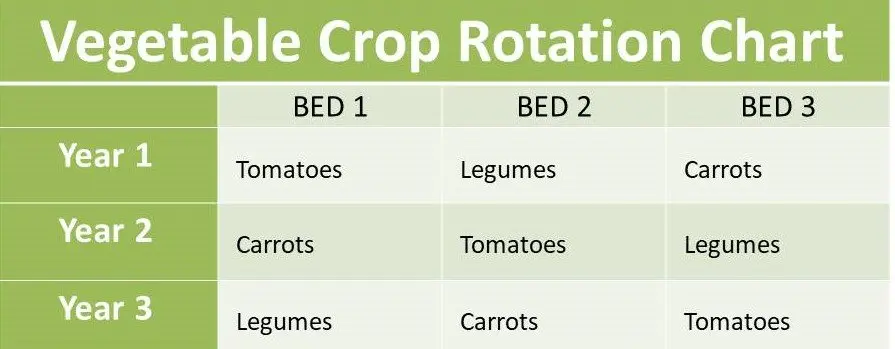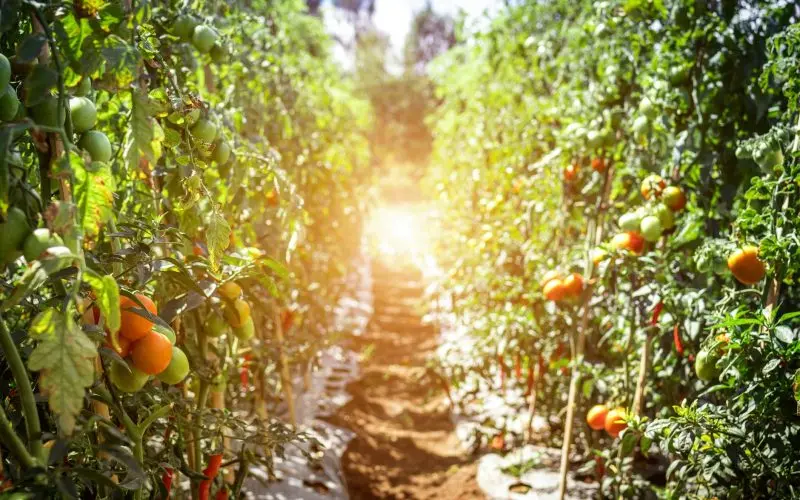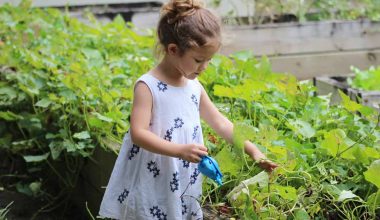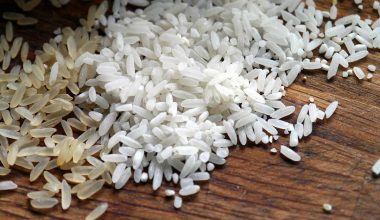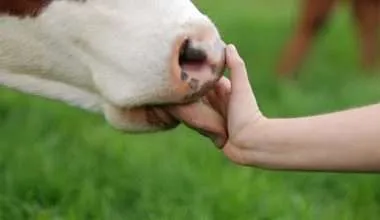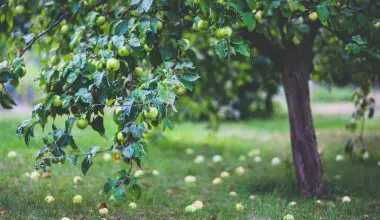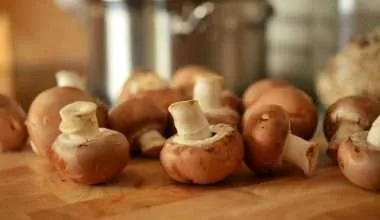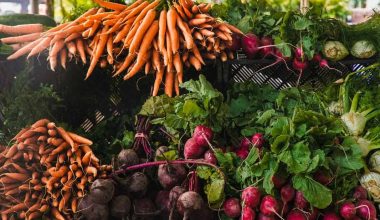Table of Contents Show
What is Crop Rotation?
Crop rotation is a farming practice employed by farmers for centuries. It is defined as the intentional planting of different types of crops on different parts of the land during different seasons in a sequential fashion. This system entitles farmers to give their farms a break in a particular season, allowing the land to rejuvenate for the next season. Crop rotation allows us to incorporate livestock into the practice as well.
History of Crop Rotation
Farmers carried out crop rotation for centuries, without having the scientific data or evidence to back its success. They didn’t even have a specific term for it. This meant that they didn’t have any clue of the impact it may have on the environment.
With crop rotation, the crop that pulls a particular nutrient from the soil allows that nutrient to replenish once again in the soil when a different crop will be planted next season. It helps to reduce the accumulation of pathogens and pests within the soil that often occurs when one species continuously cropped (Monoculture farming). Crop rotation can also improve soil structure and fertility.
The 3-Field system; with Crop Rotation Examples
The three-field system is a regime employed in the crop rotation system. It is in use since medieval times.The three-field system allows farmers to plant more crops thus increasing production.
Let me give you an example of crop rotation to make it better for you!
The land is divided into three large fields; one for plantation in autumn with winter wheat or rye: the second field was planted with crops such as peas, lentils, or beans and the third field was left unplanted. This last field will soon be overgrown, allowing for livestock to graze the fields.
Consequently, you can use the three field system on one field like your vegetable garden. Here you will be planting one at a time and then the next in rotation from the three-field system.
Read the proper guide on planning 3-field crop rotation in your backyard at the end of this article, Stay Tuned!
Their excrement allowed for the fertilization of the soil of the field so that it can regain its nutrients. Rotations of the crops were done annually, meaning that two out of the three fields would be planted every year that meant each field would be cultivated twice every three years.
Before the introduction of the three-field system, the two-field system was being used in which one land was planted while the other one was left fallow. With the rising demand for agricultural products and more crops available to sell; people shifted from the two-field system to the three-field system to increase land productivity.
Best Crop Rotation Benefits
1. High soil fertility
If a farmer chooses to plant the same crop repeatedly, the soil may become depleted of specific nutrients. Crop rotation allows different types of crops to be planted every season. Each crop has a different nutritional requirement, and to fulfill it, they extract that particular nutrient from the soil.
This reduces the load on a single nutrient in the soil, preventing it from becoming deficient in that particular nutrient since a different crop will be planted with different nutritional needs. This ultimately increases the fertility of the soil, as it will have a balanced amount of nutrients present within it in every season due to it having sufficient time and reduced burden to replenish particular nutrients.
Crop rotation also helps to increase the organic matter of the soil which is left behind by microorganisms found in various types of crops planted. Animals that graze on unplanted grasslands excrete manure which can act as a natural fertilizer for the soil and prepare it for next season.
2. Higher crop yields
Crop rotation increases the productivity of the land from a single seasonal harvest. It does not just provide a different variety of crops because of incorporation of different crop types, but it is a general bounty harvest.
The availability of different nutrients from the soil helps to provide adequate nourishment to the plants ensuring high yield production. Farmers should really consider crop rotation once they start to feel their land isn’t producing crops with sufficient yields. These further show how advantageous crop rotation is as it once again brings back life into the field which may have seen a fall in its productivity.
3. Increased soil nutrients
As mentioned earlier, crop rotation allows replenishment of nutrients without having to use any fertilizers on the soil. Allowing the land to rest for a season will allow the soil to regenerate valuable nutrients previously absorbed by the crops.
Plantation of crops such as legumes allows nitrogen fixation into the soil due to the presence of nitrogen-fixing bacteria in their roots. Different crop types can absorb different nutrients, based on their physiological needs. Knowing which type of plant should be grown after every rotation and what is the requirement of that plant is essential in carrying out crop rotation successfully.
4. Reduction in Soil Erosion
Soil erosion carries away most of the topsoil layer through wind or water. Plants (like cover crops) anchor the topsoil layer through their roots, preventing soil erosion. Planting cover crops or crawling plants will help to prevent soil erosion by giving the ground adequate crop cover and allow the land to rest in the meantime. Crop rotation helps in reducing rainfall impact on the soil and general erosion by water. Trees being planted alongside crops will provide a better preventing of soil erosion.
Preventing soil erosion goes a long way in reducing cultural eutrophication of nearby water bodies as well.
5. Limits concentration of Pest and Diseases
If the same plants are planted, again and again, that will allow produce and multiple similar pathogens repeatedly. Crop rotation helps to reduce this pathogenic load on the field as it intercepts the pest life cycle by not providing it the same habitat (same crops) again and again.
A farmer needs to be aware of the various pests and diseases that may affect his/her crops and ultimately reduce land productivity. Crop rotation lowers the risk of pest infestation and allows farmers to grow crops without using chemical pesticides harmful to the environment.
6. Reduced Weed Stress
Crop rotation helps to control the amount of weeds on the field, especially by maintaining conditions on the land that limit and reduce weed multiplication. This means that crop rotations act as crowd control for weeds competing with the crops being planted (a constant nuisance for farmers). In the long run, farmers don’t need to use tillage on the ground anymore.
7. Improvement in Soil Structure
There is reduced compaction of soil when carrying out crop rotation which improves the physical condition of the soil. This is a major advantage as it allows soil conditions in which good seed germination and proliferation of root can occur. Crop rotation helps in soil processes such as water infiltration and aeration that are all major advantages for your crops and the overall composition of the soil.
8. Reduced Pollution
The constant use of fertilizers to maintain crop fertility, the use of pesticides, and the use of tillage; all prove to be a source of pollution. Crop rotation reduces the use of all of this and thus helps to improve the environment. Crop rotation naturally increases soil fertility, reduces the population of weeds and pests on the farmland. This prevents use of synthetic chemical fertilizers, pesticides and herbicides which can be a source of pollution and cause various health issues for the farmers as well.
Disadvantages of Crop Rotation
1. Risky
Planting different crops every season means higher investments in buying different seeds for different types of crops. There is no guarantee of success in this practice and it may end up being a detrimental loss for the farmer.
Pests or diseases specific to one crop will have the potential to infect the whole field in a single season. Sometimes the yield may not be of the farmer’s desired expectations. And if it’s the only plant they have planted that season, the farmer will not be able cover his expenses.
2. Difficult to specialize
For the success of crop rotation, different crops must be planted every season. This prevents the farmer from specializing in a specific type of crop. The farmer might not be able to produce a single crop on a large scale over a long period because of the implications it may have on the soil.
Due to the farmer not having the specialty in a particular crop, he may be unable to produce high yields of that crop. Crop diversification requires investment in different planting techniques for each unique crop, this costs time and money as different crops require a different amount of time and attention.
3. In some cases; More harm than good
If the crop rotation system isn’t implemented properly, it may end up causing more harm than good. One must have complete technical knowledge and skill about crop rotation before implementing it on their farm.
Experimentation is to be avoided when carrying out crop rotation. Farmers must have the knowledge to know which crop is to be planted when, as well as what crop must be planted after it. If the same crop is planted after another crop that used the same nutrient, the nutrient depletion will then be more exacerbated. Thus lack of proper knowledge, technique, and implementation may cause the farmer to suffer from significant losses.
4. Not suitable in certain conditions
Certain climates and regions may not be an advocate of crop rotation. Monoculture may be preferred in that region as certain crops cannot grow well in specific types of soils and climate.
How to plan crop rotation for your home garden?
You can choose to carry out crop rotation in your own garden. Crop rotation for vegetables can be done on the basis of types of vegetables that you grow. Vegetable crops in the same plant family should be avoided in the same area of your garden for a year at least.
For Example; eggplant, potatoes, tomatoes, and peppers belong to the same family and so should not be planted in the same area the following year.
Crop rotations vary in the degree of complexity. They can simply involve changing the vegetable locations annually, or can be done with a bit complexity by utilizing crop cover/green manure and leaving parts of a garden to rest without any plantation for a few months.
Crop cover/green manure should be planted before, after or even with the placement of a vegetable crop in order to improve fertility of the soil and also prevent issues such as drainage, soil erosion and hold nutrients in the soil.
It isn’t ideal to leave an area fallow as it is more prone to erosion; I would rather have you plant cover crops/green manure. What’s more concerning is that, leaving an area devoid of plantation can lead to formation of weeds that can leach nutrients and cause problems for future vegetable production.
In order for crop rotation to be highly effective, don’t plant an area with vegetables or cover/green manure from the same family of plant more than once every 3-4 years. Plotting out areas of crop rotation is usually difficult to achieve in a small garden, but even the changing plant families grown in a garden from year to year is helpful in avoiding insect, pests, and other diseases.
Crop Rotation 3-Field Chart for your Garden
